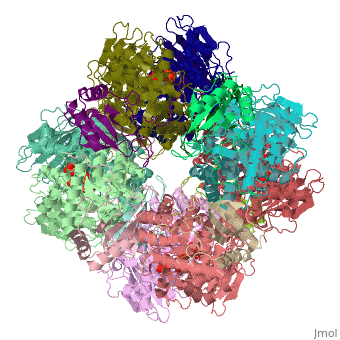Carbon Fixation
From Proteopedia
(Difference between revisions)
| Line 26: | Line 26: | ||
'''The next stage in the Calvin cycle is to regenerate RuBP'''. Five G3P molecules produce three RuBP molecules, using up three molecules of ATP. Since each CO2 molecule produces two G3P molecules, three CO2 molecules produce six G3P molecules, of which five are used to regenerate RuBP, leaving a net gain of one G3P molecule per three CO2 molecules (as would be expected from the number of carbon atoms involved). | '''The next stage in the Calvin cycle is to regenerate RuBP'''. Five G3P molecules produce three RuBP molecules, using up three molecules of ATP. Since each CO2 molecule produces two G3P molecules, three CO2 molecules produce six G3P molecules, of which five are used to regenerate RuBP, leaving a net gain of one G3P molecule per three CO2 molecules (as would be expected from the number of carbon atoms involved). | ||
| + | |||
| + | The regeneration stage can be broken down into a series of steps: | ||
| + | |||
| + | 1) Triose phosphate isomerase converts all of the G3P reversibly into dihydroxyacetone phosphate (DHAP), also a 3-carbon molecule. | ||
</StructureSection> | </StructureSection> | ||
== References == | == References == | ||
<references/> | <references/> | ||
Revision as of 13:13, 1 January 2023
| |||||||||||

